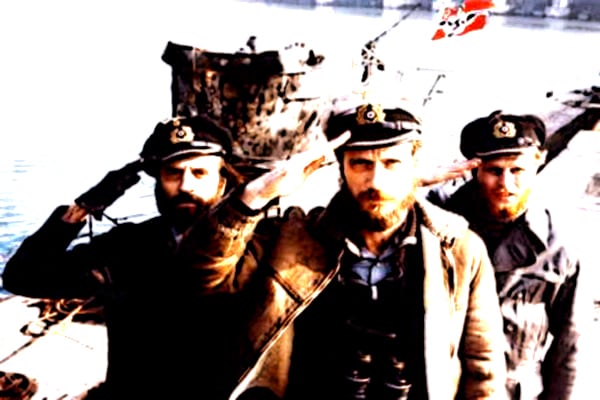When a powerful warlord in medieval Japan dies, a poor thief recruited to impersonate him finds difficulty...
Tatsuya Nakadai: Shingen Takeda / Kagemusha
Kagemusha(影武者) is a 1980 film by Akira Kurosawa. The title (which literally translates to "Shadow Warrior" in Japanese) is a term used for an impersonator. It is set in the Warring States era of Japanese history and tells the story of a lower-class criminal who is taught to impersonate a dying warlord in order to dissuade opposing lords from attacking the newly vulnerable clan. The warlord whom the Kagemusha impersonates is based on daimyo Takeda Shingen and the climactic 1575 Battle of Nagashino.

The first time I watched Kagemusha I was enthralled by the visuals, and hypnotised by being transported to 16th Century Japan; A captivating Era retaining precise honour and orderly constraints.
The central story of Kagemusha, the double, the shadow warrior, whom is chosen by the late Lord Shingen's advisers to be the Lord himself, to fool his enemies and even his own clan, is storytelling worthy of Akira Kurosawa.
It is indeed a three-hour epic (Kurosawa's second longest film, disregarding the unseen cut of The Idiot), however resulting in a not necessarily condensed experience.
Every scene has enough nuance, perspective and irony to pierce the impending tragedy that looms over the Takeda clan.
It's been said, most of all by Kurosawa himself, that this film was a "dress rehearsal" for his last epic masterpiece RAN.
RAN is the more artistically overwhelming and incredible superior, although Kagemusha is still a staggering achievement for any director and Akira blasts this point across with this layered piece.
This being his third colour film, after his 70s period, you see the work divulged by the impressive storyboards he created (you can see the reprints in the Criterion DVD package), creating scene after scene where colours are heightened, returned and made precisely for specific moods and settings required.
Akira and Bergman are the first directors who were able to move from expressive black and white films into the World of colour yet still make the personal renderings regarding certain scenes meaningful with powerful imagery.
The scene in which Kagemusha is dreaming, a colourful landscape with snow, mountains, and water, whereupon the armoured original Lord pursues him.
This imaginative rendering is his subconscious coming to a conclusion via this dream. It is a premonition of the impending doom which presents itself to the Takeda Clan; The overconfidence and temporary affiliation that Kagemusha has with them...Yet the reality is still to be concluded.
It perhaps also perceives the eclipsing demise of their irrationality by moving the mountain representation, which is the Lord. The answer is open to interpretation yet Akira has given many clues throughout the film for audiences to analyse and reflect upon. The reality, echoes and dream all symbolise the circle of power man is fighting himself for.
Even Nobunaga Oda, an enemy of the Takeda Clan, utilizes acquisitions and ambitions perhaps representing the future of Japan. He is the representation of Western civilisation mixing with Eastern superiority and the honour = strength + nobleness mindset.
The final climactic battle-turned-slaughter also is on par with Akira's action acculturation. It has a scope and vastness later echoed in his RAN, and it also echoes the point that warfare has changed with the arrival of arquebuses; Guns.
In the aftermath, the horses in slow motion represent the last gushing of life, and bodies strewn with blood hopelessness. Following this with Kagemusha's final stand as he runs madly through the field towards his end, it all marks as one of the supreme set-pieces ever done depicting the horror of sacrifice and futility of war. It's not one of the easier Kurosawa films to watch due to its pacing and length, although it does contain effortless performances and imagery unrivalled, thus it stands as a fine interpretation of history via artistic means.
Kagemusha shows its main character double, redeem and ultimately beguiles moral implications from his actions: In a final show of loyalty, he takes up a lance and makes a futile charge against Oda's fortifications, ultimately dying for the Takeda clan. The final image kagemusha's bullet-riddled body being washed away down a river, next to the flag of the Takeda clan. This is quite possibly among Akira's most personal, intriguing endings that capture loyalty, sacrifice and horror. He is a ghost that has become a shadow, an honour-drenched martyr to a seemingly lost cause. A tragic yet heroic act in a story of turbulence, deception and conflict.
''Swift as the wind, silent as the forest, fierce as the fire, immovable as the mountain.''
 Login
Login
 Home
Home 24 Lists
24 Lists 448 Reviews
448 Reviews Collections
Collections
 0 comments,
0 comments, 
















